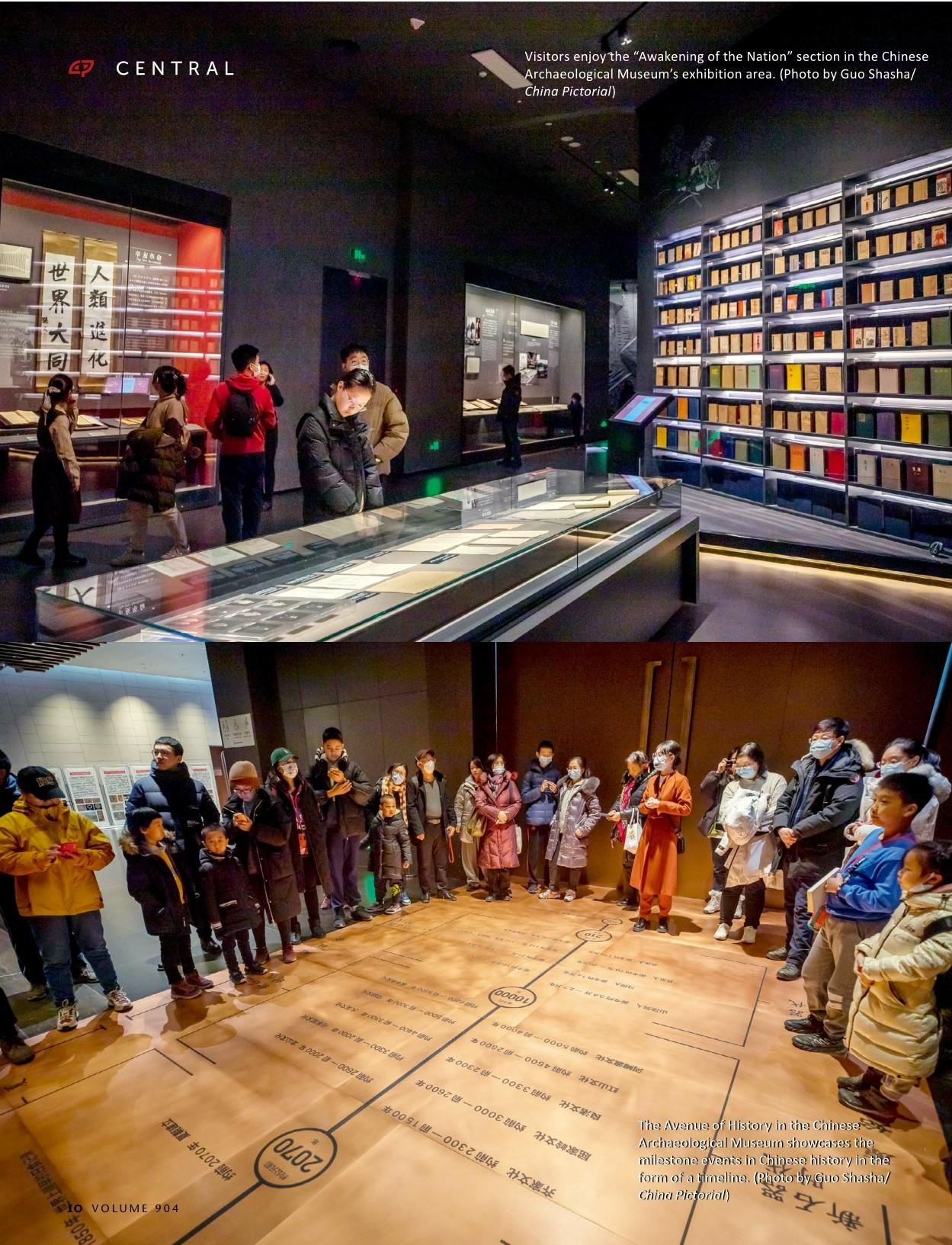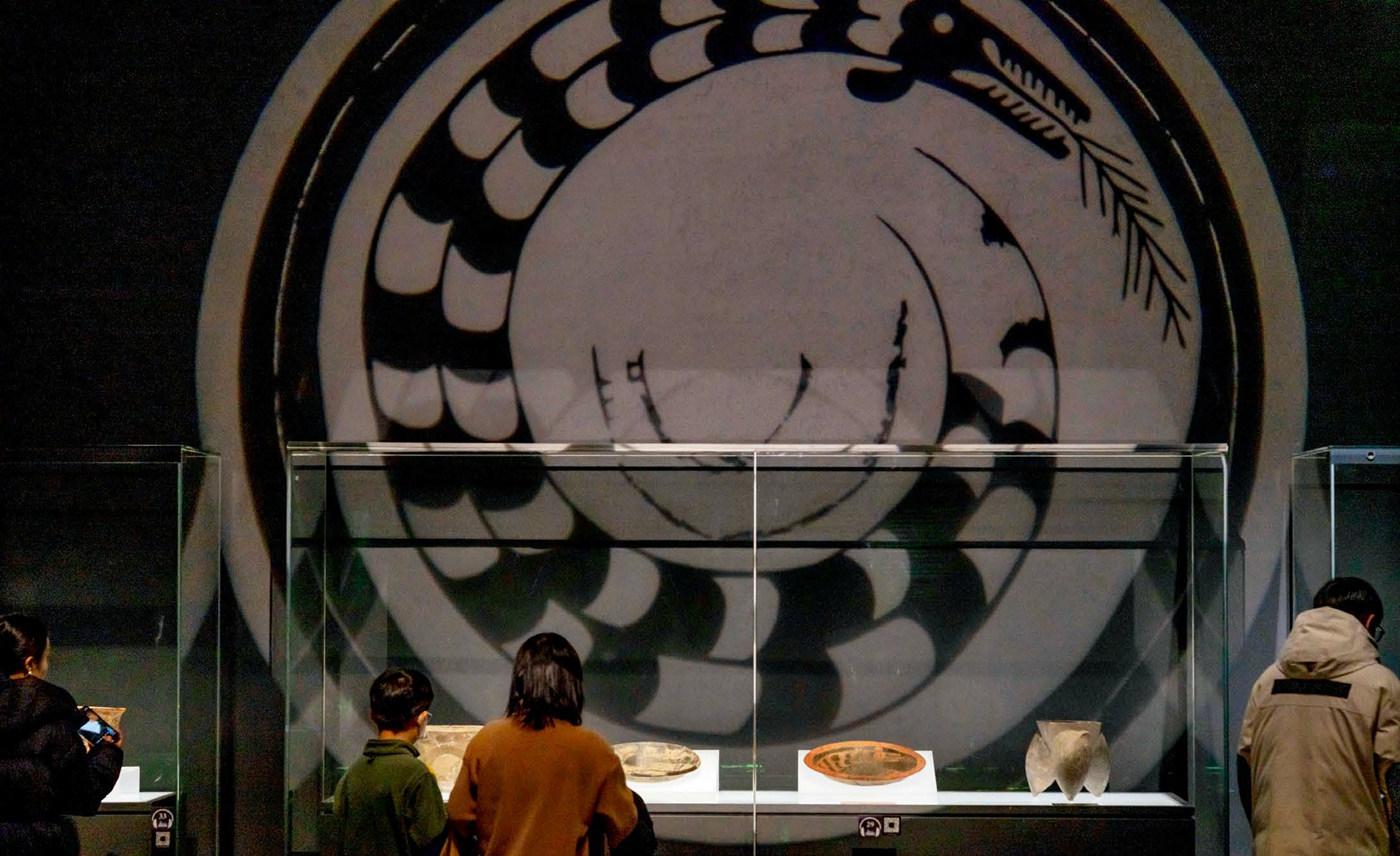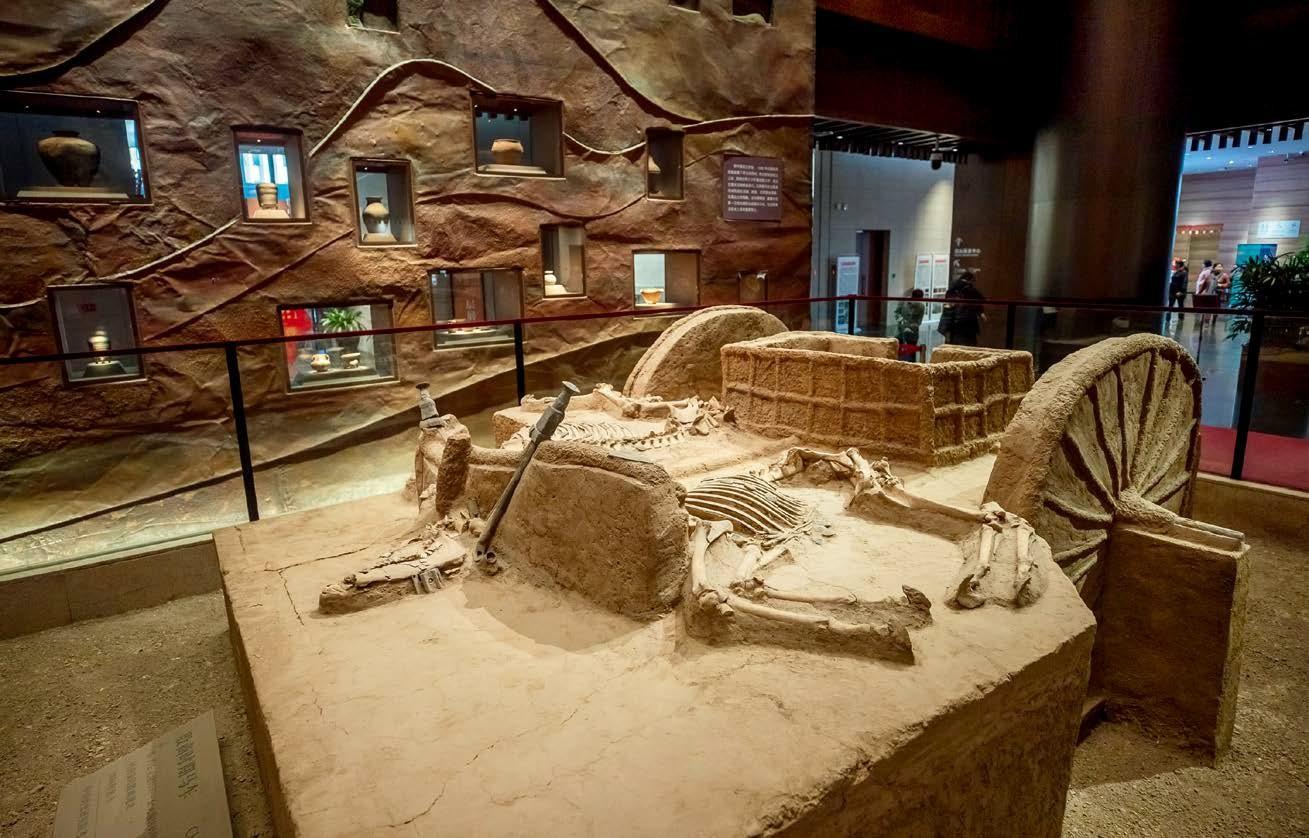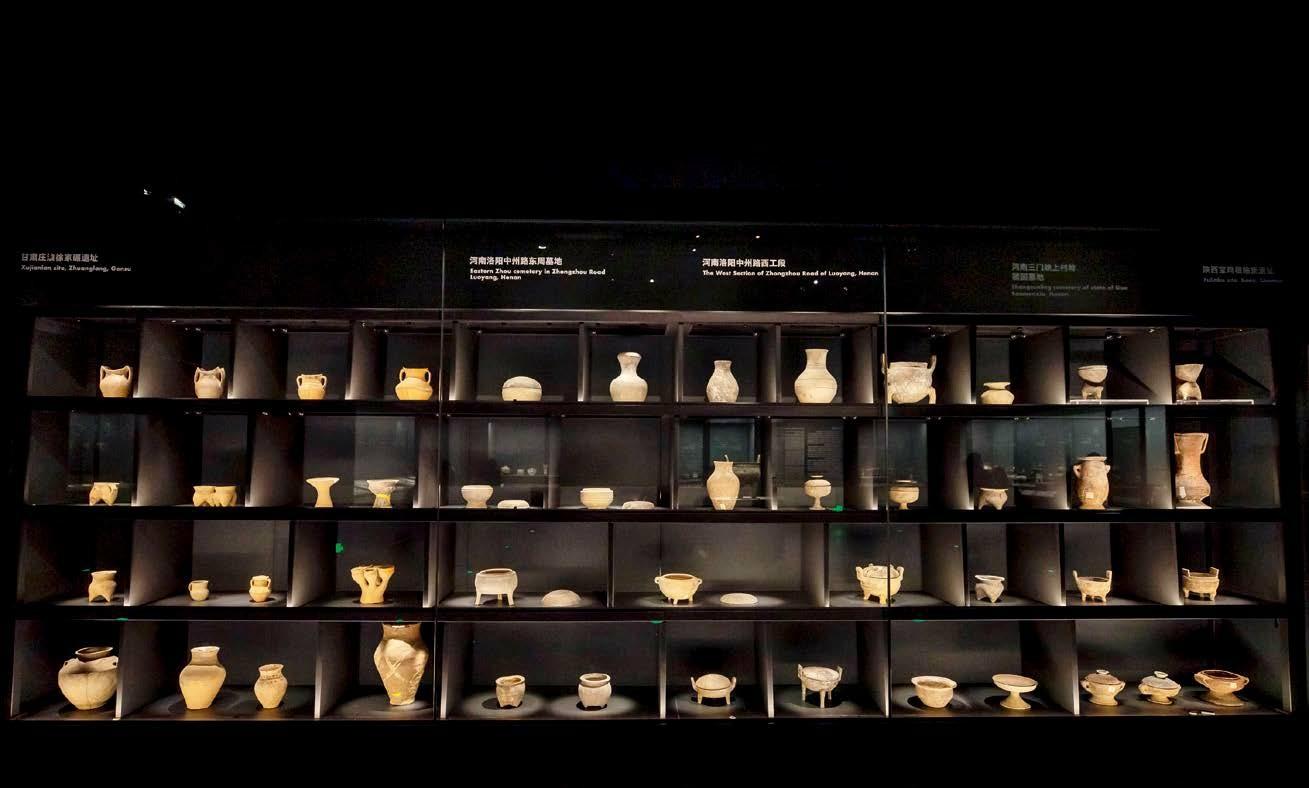A Trove of National Treasures
2024-07-13byWangYuncong
by Wang Yuncong
Since it opened to the public more than a year ago, the Chinese Archaeological Museum, the first national-level professional museum named after archaeology in China, has become both a trove for national treasures and a window for China to recount its history.
Over 6,000 Exhibits
From the painted dragonpatterned pottery plates of the Neolithic Age and the turquoise-inlaid ivory cups of the Shang Dynasty (1600-1046 B.C.) to Silk Road Buddhist relics unearthed in Xinjiang and Maritime Silk Road relics discovered in underwater archaeological excavations in Pingtan County, Fujian Province, the Chinese Archaeological Museum has tracked the historical footprints of the nation and proved the continuation of the Chinese cultural heritage.
Focusing on showcasing the splendid Chinese civilization, the museum offers over 6,000 exhibits, many of which are archaeological findings and precious ancient books and documents. The exhibition area of the museum covers more than 7,000 square meters across five sections based on the research of several generations of scholars. They are “Origin of Civilization,” “Living in China,”“Unification of the Country,”“Harmony among All Nations,”and “Awakening of the Nation.”
Exhibits cover various periods from ancient times to modern times, demonstrating the continuity of Chinese civilization. Complex crafts such as ceramics are a microcosm of the innovation of Chinese civilization. The consistent planning and layout of ancient capitals demonstrates the process of the formation and development of a unified multiethnic country. The inherent inclusiveness and peacefulness of the Chinese nation is well documented through cultural relics related to scenarios along the Silk Road. Together, these exhibits with distinctive features compose a broad picture of exchanges and coexistence of different civilizations.
High-Tech Immersive Experiences
In the “Origin of Civilization”area, a large-mouth pottery zun (wine vessel) dating back about 4,800 years is placed in a prominent position near the entrance to the museum. The artifact was unearthed in Mengcheng County, Anhui Province. A group of carved symbols on the belly of the piece resemble the sun, moon, and mountain from top to bottom. When visitors simply tap on the glass of the display cabinet, the“sun,” “moon,” and “mountain”on the vessel seem to jump onto the glass. Efforts like these are how the museum is using advanced technology to create enhanced immersive experiences.
With the support of digital technology, the Chinese Archaeological Museum has worked hard to bring cultural relics to life. Usage of video presentation, multimedia interaction, and scene simulation at the exhibition site creates a comprehensive cultural experience for visitors covering visual, auditory, and tactile senses. In the Stone Age exhibition area, interactive videos recreating a scene of stone tool production has proved quite popular. Near the display area of inscriptions on oracle bones, multimedia equipment depicts the process of divination during the Shang Dynasty. Outside the Dingding Gate of Luoyang City during the Sui(581-618) and Tang (618-907) dynasties, reproduced through 3D modeling, the detail goes as deep as wheel ruts and camel footprints. These interactive and immersive experiences thrust visitors directly into historical scenes, giving them a deeper understanding of history.
Recreation of Archaeological Scenes
The Chinese Archaeological Museum is a public museum which also serves archaeological research. In terms of display arrangement, quite a few designs are related to archaeology.
The two Shang Dynasty chariots placed on both sides of the museums “Avenue of History”are the oldest horse-drawn carriages discovered in China so far. The two vehicles were relocated from the World Heritage site Yin Xu (or the Yin Ruins), which boasts archaeological remnants of the ancient city of Yin, the last capital of the Shang Dynasty. Archaeologists placed each whole chariot in a huge box and transferred them to the museum where long-term archaeological research has been conducted in a laboratory.


Moving a single artifact as a whole in one box is an important archaeological method. Archaeological field work is subject to constraints of weather, environment, and other uncontrollable conditions, making detailed excavations more difficult to carry out. When cultural relics are transported to a laboratory for processing, archaeological work can be more thorough and accurate. To enhance the visiting experience, the museum set up an interactive zone where visitors can touch fragments of pottery from thousands of years ago in the display boxes, experiencing the work of archaeologists.
The museum mainly adopts a“warehouse style” to display its exhibits. It categorized exhibits into the three groups of historical sites, relics, and tombs, which reflects the distinctive disciplinary characteristics of archaeology.
“Archaeological research is a holistic examination of a group of relics and artifacts with common characteristics that are distributed in a certain area within a certain period of time,”says Gong Wen, director of the Chinese Archaeological Museum.“The research is conducted in accordance with archaeological culture, focusing on categories and types of relics and artifacts rather than studying individual artifacts with an appreciative spirit.” Gong added that such disciplinary characteristics guided the museum to avoid displaying exhibits as isolated cultural relics and instead organizing exhibitions based on archaeological culture and major archaeological sites.
